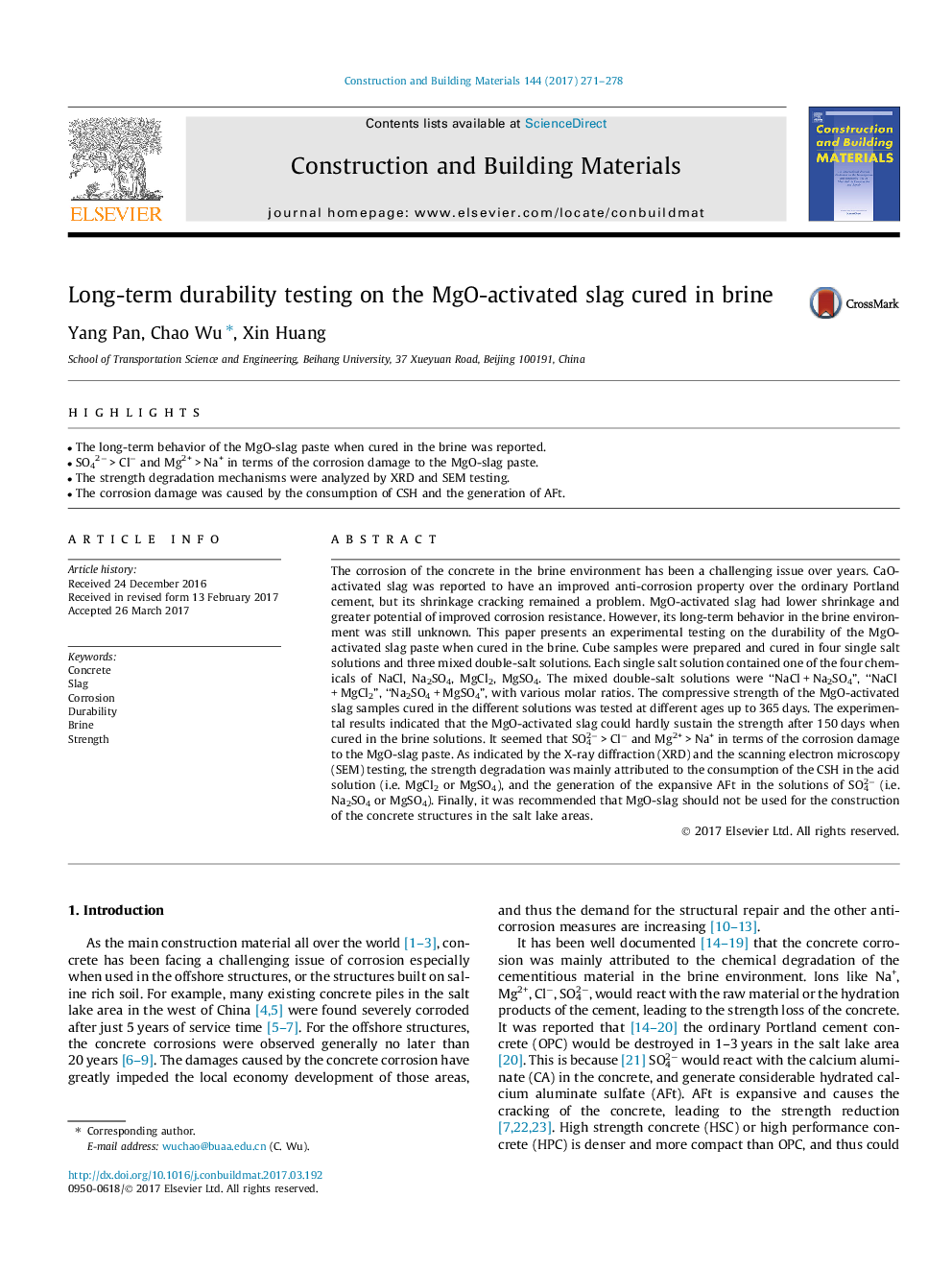| Article ID | Journal | Published Year | Pages | File Type |
|---|---|---|---|---|
| 4913166 | Construction and Building Materials | 2017 | 8 Pages |
Abstract
The corrosion of the concrete in the brine environment has been a challenging issue over years. CaO-activated slag was reported to have an improved anti-corrosion property over the ordinary Portland cement, but its shrinkage cracking remained a problem. MgO-activated slag had lower shrinkage and greater potential of improved corrosion resistance. However, its long-term behavior in the brine environment was still unknown. This paper presents an experimental testing on the durability of the MgO-activated slag paste when cured in the brine. Cube samples were prepared and cured in four single salt solutions and three mixed double-salt solutions. Each single salt solution contained one of the four chemicals of NaCl, Na2SO4, MgCl2, MgSO4. The mixed double-salt solutions were “NaCl + Na2SO4”, “NaCl + MgCl2”, “Na2SO4 + MgSO4”, with various molar ratios. The compressive strength of the MgO-activated slag samples cured in the different solutions was tested at different ages up to 365 days. The experimental results indicated that the MgO-activated slag could hardly sustain the strength after 150 days when cured in the brine solutions. It seemed that SO42â > Clâ and Mg2+ > Na+ in terms of the corrosion damage to the MgO-slag paste. As indicated by the X-ray diffraction (XRD) and the scanning electron microscopy (SEM) testing, the strength degradation was mainly attributed to the consumption of the CSH in the acid solution (i.e. MgCl2 or MgSO4), and the generation of the expansive AFt in the solutions of SO42â (i.e. Na2SO4 or MgSO4). Finally, it was recommended that MgO-slag should not be used for the construction of the concrete structures in the salt lake areas.
Related Topics
Physical Sciences and Engineering
Engineering
Civil and Structural Engineering
Authors
Yang Pan, Chao Wu, Xin Huang,
